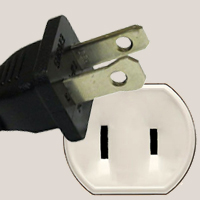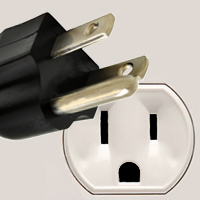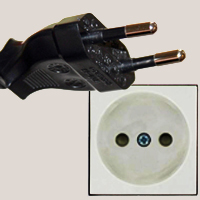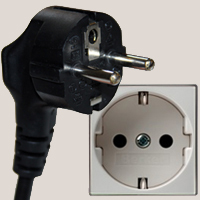Latin America Regulatory Compliance Group
Type Approvals for Latin America and the Caribbean
Latin America Regulatory Compliance GroupLARCG COVERS SURINAME
LARCG COVERS LATAM
TAS Type Approval in Suriname
TAS (Telecommunicatie Autoriteit Suriname) is the telecommunications regulating agency in Suriname. All products using radio frequency and cellular technology require type approval and certification in order to commercialize in Suriname.
Suriname does not require in-country product testing, local representation, or specific labeling.
LARCG can use existing international test reports for the homologation process to obtain the TAS approval. Technical documents will be reviewed and validated in the approval process.
Modular, system, or family approval approach may be possible depending on the equipment.
Products requiring TAS approval include:
- Car audio systems
- Headphones
- Mobile phones
- RFID equipment
- BT speakers
Suriname Plug Types




Type A plugs, rated at 15 Amps, are used mainly in the United States, Canada, Mexico, South America and Central America. This Class I, non-grounded, non-insulated plug operates on AC current and is known as NEMA 1-15. The plug has two 1.5 mm thick blades which measure 15.9 – 18.3 mm in length and are spaced 12.7 mm apart. The neutral blade is 7.9 mm wide, while the hot blade is 6.3 mm wide. This plug almost always operates between 100 – 127 volts and is only compatible with socket type A.
Type B plugs, rated at 15 amps, are used mainly in the United States, Canada, Mexico, South America and Central America. This class I grounded, non-insulated plug operates on AC current and is known as NEMA 5-15. The plug has two 1.5 mm thick blades which measure 15.9 – 18.3 mm in length, and are spaced 12.7 mm apart. It also features a 4.8 diameter round, or u-shaped earth pin measuring 3.2 mm which acts as a ground. This plug almost always operates between 100 – 127 volts and is compatible with type A and B sockets. Grounded type B outlets are still rather uncommon in some parts of Central and South America. However, it is not uncommon for people to cut off the earth pin to achieve compatibility with two-pole non-grounded sockets.
Type C plugs are most commonly used in South America, Asia, and Europe (except the United Kingdom, Ireland, Cyprus and Malta), and are rated at 2.5 Amps. They operate on AC current at 220 – 240 Volts. Probably the most widely used international plug, CEE 7/16 or Europlug, features two 4 mm round pins measuring 19 mm in length, which are spaced 17.5 mm apart at the tip and 18.6 mm apart from the center point of each pin’s base. 10 mm long insulated sleeves slightly cover the base of the pins; however, they are relatively flexible which allows the plug to mate with any socket that accepts 4.0 – 4.8 mm round contacts on 17.5 – 19 mm centers. As a class II plug, the Europlug is generally limited to applications that require 2.5 amps or less. Note: whereas type C plugs are very commonly used, this is not the case for type C sockets, as these sockets are older and not grounded. Most counties now require grounded sockets to be installed in new buildings; and as such, the sockets have become illegal almost everywhere – they are being replaced by type E, F, J, K or N. To be clear, only the sockets have become illegal; the plugs remain in use.
Type F plugs are known as CEE 7/4 by the International Electrotechnical Commission, as well as the “Schuko plug”, which is an acronym of “Schutzkontakt”, meaning “protection contact”, or “safety contact.” This grounded plug operates on AC current at 220 – 240 Volts and is rated at 16 Amps. Featuring grounded clips on the top and bottom, type F plugs feature 4.8 mm rounded pins measuring 19 mm in length, and are spaced 19 mm apart from either center point. The distance between either grounded clips and the center of the plug is 16 mm. Because the CEE 7/4 plug can be inserted in either direction into the receptacle, the type F connection system is not polarized.